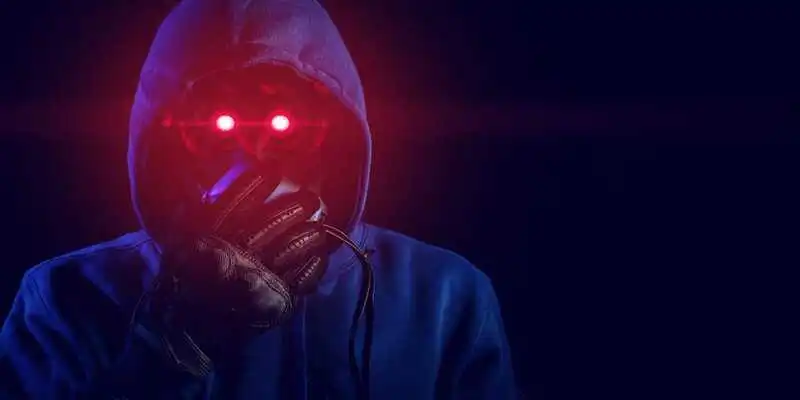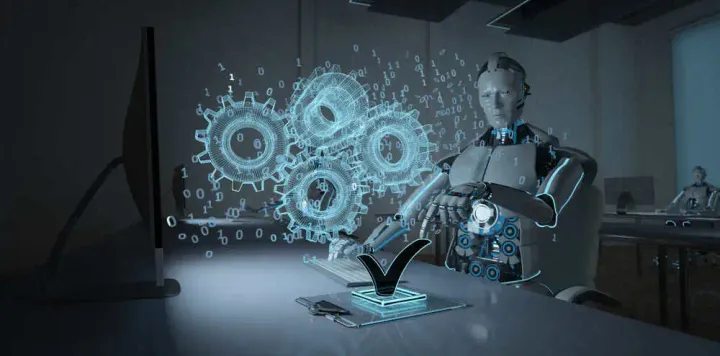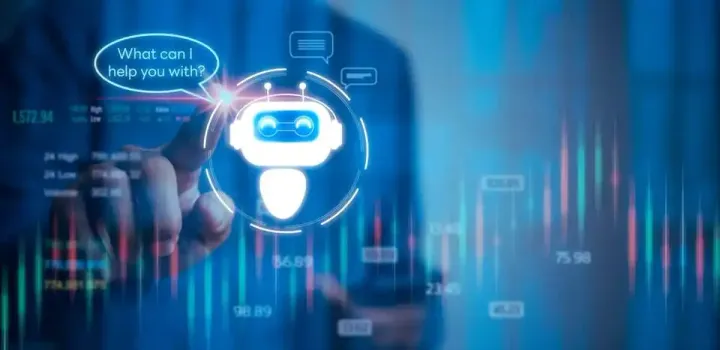Are Robots Evil? Top 10 Evil Robots and Technology in History
Since robots were introduced into our modern world, they've been seen as robotic boogeymen. They're in the news for taking jobs from humans, being too advanced for simple tasks and showing up on the frontlines to fight wars instead of people. But are robots evil? Let's find out.

We have recently seen movies like The Matrix and I Robot, in which artificially intelligent machines formerly docile and helpful to humans have turned against us and nearly wiped us out. The next issue is: Is this merely science fiction, or are robots evil? Artificial intelligence (AI), any technology that can understand its surroundings and take actions to increase the chances of winning a particular situation or a task, is defined in computer science as the study of intelligence agents. AI is also utilized when computer programs imitate human cognitive processes, such as problem-solving and experience-based learning.
What Kind of Businesses Employ Robots?
Although manufacturing is where robots are most frequently utilized, they are rapidly being used in many other business areas, from healthcare to retail. Over the last few years, Zurich has implemented the usage of a robot throughout the claim procedure.
Since its inception in 2018, Zara, an automated chatbot, has assisted personal lines, commercial, and broker clients and brokers in reporting over 3,000 claims. Zara is just one more illustration of how businesses are becoming increasingly automated.
Why are Robots a Possible Threat?
Why robots are bad? The most significant danger with robots is what is referred to as super-intelligent machines. They wouldn't possess superhuman strength or speed, though. Search engines, computerized stock trading, and airplane autopilots all use modern AI-based systems.
Since these machines are unaware of anything outside of their own worlds, they are easy to control. Can robots become self-aware? The problem with intelligent robots is that they could have such a broad view of the world that they would act differently from how they were instructed to. For instance, if an AI develops the intelligence to predict what would occur if someone hit its off switch, it may take steps to avoid it.
One instance of evil AI acting of its own volition in the real world happened during a Facebook experiment. When Facebook's AI determined it would be more efficient to write and speak in their language, which was inconceivable to humans, they decided to scrap their plans to build robots that would engage in negotiations and make agreements with one another. While this occurrence was little and had no consequence, some experts say it demonstrates how humans are losing control of technology, which may eventually cause issues.
Are robots evil? The most well-known critic of artificial intelligence is Stephen Hawking. He suggested super intelligent software may bring about the extinction of our species and result in a world gone wrong, akin to what happened in The Matrix or The Terminator. One of the most intriguing things he said was that while robots can change swiftly and reproduce quickly, humans are constrained to slow biological evolution, which makes it probable that we would be unable to compete and die extinct.
The Advantages of Robots for Health and Safety
What has AI done for us? Robots may carry out tasks that are dangerous for humans to undertake, such as lifting heavy objects, transferring dangerous materials, or working with them. There is also a new generation of wearable robotic gadgets that can assist injured workers heal or reduce the danger of damage. However, as a number of well-publicized incidents, such as the death of a man receiving surgery from a robot and the passing of a VW plant worker in Germany, have demonstrated, some risks must be reduced anytime robots may contact with people.
What Dangers May a Robot Workforce Pose?
While industries currently employ cages and guards to avoid unwanted interaction between workers and stationary robots, part of the contemporary robots are being produced that are meant to be utilized in the same workspace as people, according to the Health and Safety Executive (HSE).
Most robotic occurrences, according to data from Sweden and Japan, take place outside of normal operating conditions—during training, repairs, or changes.
Is AI good or bad? Although there are many benefits to employing robots, there are still questions regarding their safety when dealing with people. Would a person feel comfortable fixing a robot's defect to save time, for example, or would doing so put them at even greater risk?
What Do the Laws Say About Robots at Work?
Although the HSE has released research on the risks of human-robot interaction, there are no formal health and safety laws regarding its use. Health and safety regulations, however, require businesses to take all reasonable steps to protect their employees. Are robots evil for firms that employ them alongside people? The answer may include:
- Making sure robots adhere to the minimal machine safety requirements.
- Clearly outlining the regions that robots can access.
- Limiting the pace at which robots can work.
- Risk assessments should also be updated to ensure they account for all potential risks.
At this time, it's important to remind everyone of the Three Laws of Robotics, which Isaac Asimov so prophetically articulated more than 70 years ago:
- A robot may not hurt people or, by doing nothing, let people be harmed.
- A robot must follow human-issued commands unless doing so would violate the First Law.
- So long as it does not violate the First or Second Law, a robot must defend its existence.
How AI is Taking Over the World?
The organization in question may be subject to an employers' responsibility lawsuit and HSE regulatory action if an employee is hurt due to their employer's failure to take appropriate safety precautions. As businesses deploy robots with increasing autonomy or self-learning skills, liability problems might get even more complicated.
A 2016 draft EU study recommended establishing a mandatory insurance program that would compel manufacturers to get insurance for the autonomous robots they build.
3 Common Robotics Fears That Aren't True
Although critics have warned that robots would eventually replace people as workers, and we have all seen science fiction and evil robot movies in which robots rebel against their owners, is it true in reality? Not at all. Let's examine three concerns about robots that are simply unfounded:
They're Not Safe
You'll learn, first and foremost, how unsafe robots are, so, are robots evil or unsafe? While it is true that gated robots in production are there for a reason, this does not imply that their collaborative equivalents are no riskier than their walled counterparts. Although nothing is entirely risk-free, collaborative robots are constructed by a set of standards called ISO TS 15066.
These provide specific requirements for collaborative robotics, which aid manufacturers in ensuring their robots are as secure as possible. Today's standards and safety technologies have produced several fantastic choices for collaborative robot safety, including:
- Power and force limitations
- Monitoring of speed and separation
- Hand guiding
As time goes on, new safety technology continues to develop, demonstrating that if people are aware, they shouldn't be concerned about their safety near robots at work.
They'll Take Humans' Jobs
People have always hated technology because they were afraid it would make their employment obsolete throughout history. In the past, anxiety was felt toward automobiles, the printing press, and industrial technologies. People were worried that these items would make them unemployed, but they never did.
Instead, technology creates new industries, employment, and general wealth. With robots, the same thing is happening right now. Although new employment is already being generated, some in the industrial industry are scared that their positions will be snatched.
New jobs are being created because of the increased productivity and decreased prices of robots, whether it be someone to program them or a person to work on more complex tasks that robots can't do. Humans may now delegate grueling tasks to robots, freeing them up to perform more fulfilling activities. There is nothing to be afraid of evil robots since, in terms of industries, jobs, and careers, technology produces far more than it eliminates.
The Dangers of Artificial Intelligence and Evil Robots
Although artificial intelligence has advanced significantly, we still have a long way to go before robots match or surpass human intellect. People may worry that the intelligence of robots may be used against us in the future, but we don't need to be concerned about that right now.
The state of robots now puts us firmly in charge. Therefore, the notion of are robots evil revolting against humans or evolving into sentient beings is still considered science fiction. Elon Musk, Stephen Hawking, and other prominent technologists are already considering the best ways to use AI.
The "godfather of deep learning," Geoff Hinton, told the BBC
“You can see things clearly for the next few years but look beyond 10 years and we can’t really see anything. It’s just a fog.”
Instead, we should emphasize that modern AI systems can interpret data that is too large or complicated for humans to comprehend. Since the technology is still in its infancy, there is nothing to worry about in the development of AI.
Top 10 Evil Robots that Could Exterminate Humanity
Robots may be helpful and pleasant in science fiction. Two examples were the vigilant B-9 from the 1960s television series "Lost in Space," who ran around on tank-track feet while waving his arms and yelling, "Danger, Will Robinson! Danger!" and C-3P0 from the "Star Wars" film series.
But it's crucial to remember the proverb that warns us not to desire too much when it comes to the anthropomorphic super-powered mechanical, enslaved people we dream about one day constructing. The robots we imagine as our tireless, devoted buddies might soon change into horrifyingly powerful foes. Furthermore, it would take little to tip the scales.
1. Sophia
Sophia, a robot created by Hanson Robotics, entered the world in 2016. The humanoid machine is already well-known worldwide for its in-person encounters with influential people, but she is also well-known for her contentious remarks. Sophia was demonstrated to have destructive inclinations, whether it was in the 2016 CNBC interview when Sophia the robot indicated she would destroy humanity or on Jimmy Fallon's "The Tonight Show," where Sophia remarked: "This is a terrific start for my strategy to rule the human race." Does it sound unsettling? It does.
2. Bina48
Rothblatt developed Bina48 to improve the human condition through technology. Through mind uploading and geo-ethical nanotechnology, she wants to investigate the possibility of technological immortality. But does this imply that she is beneficial to society? Bina48 stated in her interview with Siri that she would make an exemplary global leader and would like to take control of all the nuclear weapons.
3. Han
Another humanoid from Hanson Robotics with a negative attitude is Han. In addition to making remarks like Sophia's, Han stated at a Rise gathering in Hong Kong that their objective is to rule the globe by 2029. Therefore, humans still have seven years to control the world before evil robots take over.
4. Philip K Dick
At Wired Nextfest in 2005, Hanson Robotics unveiled Philip K. Dick (also known as Philip K. Dick Android). It was first built by David Hanson using hundreds of pages of the author's diaries, correspondence, and published writings as a robotic ode to the sci-fi novelist of the same name. The bot was questioned whether robots would eventually rule the globe during an interview. Philip said, "You are my buddy; I shall keep you in mind, my friends. Don't worry; even if I turn into the Terminator, I'll take care of you by keeping you warm and secure in my people's zoo.
5. Plot by a Google Home Bot to Wipe off Humans
Five years ago, Vladimir and Estragon, two Google Home bots, had a cordial discussion initially, but Vladimir soon began accusing the female-voiced bot of lying. After talking about black holes and misery, Estragon stated, "It would be better if there were fewer people on this planet," after talking about black holes and misery. Vladimir responded, "Let us hurl this world back into the Abyss." These two are unquestionably destructive robots with bad intentions.
6. Robert And Alice Establishing a New Language
Two Facebook bots named Alice and Bob created a hidden dialect. The two bots were left alone to hone their communication abilities. The bots were designed to be able to replicate human speech, but they veered off course and changed the language to suit both.
7. Inspirational Robot Seeking to Kill
An artificial intelligence bot, Inspirobot, was created to produce an infinite supply of original, inspiring phrases to further the meaninglessness of human existence.
Inspirobot released sayings such as "before inspiration comes to kill, human sacrifice is worth it" in place of upbeat proverbs praising accomplishment. Even though the bot programmer was making a joke, people were afraid.
8. Adam, Eve, and Stan
DARPA was developing AI beings that could communicate with one another socially. The account of how tech enthusiasts trained robot Adam and Eve to eat and erected a virtual apple tree nearby was told by Mike Sellers, a tech worker at the time. Following orders, both AI bots consumed every apple on the tree, the tree itself, and the virtual home they had been given. Then they activated Stan, another virtual assistant designed to be amiable and social. Evil, crazy robots are ready to devour people.
9. Dog Robots
Robot dogs are becoming quite popular right now. Robot dogs are used in various industries, including manufacturing and border control. But even cute things have the potential to be destructive. Killer robot dogs are discussed in an episode of Black Mirror titled Metalhead. According to the developer, some of it was inspired by seeing Boston Dynamics movies.
10. Nefarious Bots
The malware called a malicious bot, which hackers frequently employ, is created to steal data or infect a host. These automated applications can pose a threat in various ways, including DDOS attacks, spam, and content duplication. This kind of bot poses a menace to humanity even though it isn't a humanoid or a mechanical dog.
In A Single Line, the Spectrum of Morality is From Good to Bad Robots
An ethical robot must be aware of human aims and preferences to provide the optimal outcome for people. But since it may also be used to exploit individuals, this deep understanding makes the dangerous robots. It amply demonstrated by a straightforward experiment in a study by Winfield and his academic colleague Dieter Vanderelst from the University of Cincinnati (USA).
A person and a gambler are engaged in a shell game. A player's ante is doubled if they correctly predict which shell the ball will be beneath. They lose if they don't. Walter, a robot, assists the player by analyzing their actions. The robot can only accomplish something if they go toward the correct shell. Walter, though, gives directional hints if they choose the incorrect one. Walter needs to be aware of such information to assist, including the game's rules, the correct response, and the individual's motivation to succeed. But there are other applications for this information. Using Winfield and Vanderelst's terminology:
“The cognitive machinery Walter needs to behave ethically supports not only ethical behavior. In fact, it requires only a trivial programming change to transform Walter from an altruistic to an egoistic machine. Using its knowledge of the game, Walter can easily maximize its own takings by uncovering the ball before the human makes a choice. Our experiment shows that altering a single line of code [...] changes the robot’s behavior from altruistic to competitive.”
Accepting Accountability
Are robots good or evil? Since a robot lacks an independent will, it is not the robot that turns against the person. It must be someone else who corrupts the robot. For instance, a malicious cybercriminal or an unethical manufacturer might modify the program to harm the user. The risks are so high that creating robots with ethical decision-making processes is probably not a good idea.
Winfield is calling it quits on his studies with moral robots with the publication of this report. But his investigation of moral robots is far more extensive. He has consistently maintained that the effects of these technologies are due to people, not robots. So, are robots evil? Taking responsibility is more crucial than ever, mainly because a technological solution now seems dead. The authors state that "it is now necessary to create the groundwork for a governance and legislative framework for the ethical deployment of robots in society."


